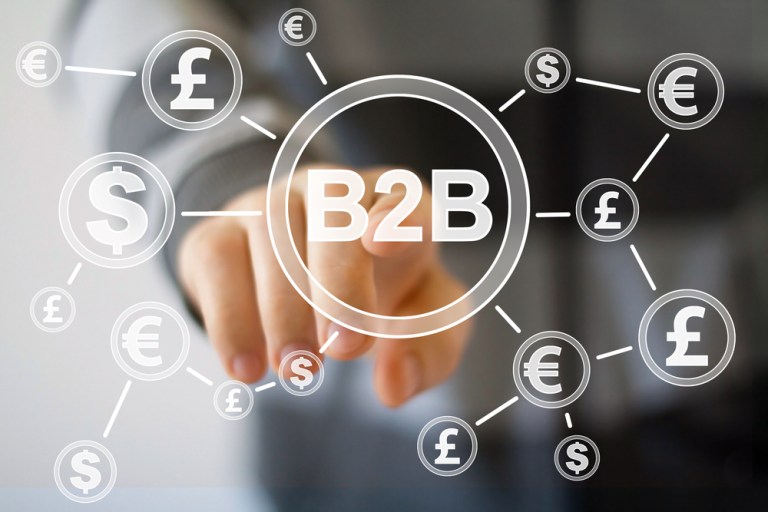
The payments industry has been talking about the digitization of B2B transactions for years, maybe decades, with not much of a nudge of that needle. While a stubborn reluctance among businesses to let go of manual processes in accounts payable and accounts receivable continues to hold the industry back, it doesn’t provide the whole story of why electronic B2B payments adoption still struggles to get off the ground.
In some ways, the lack of digitization is the result of the financial services industry operating on misconceptions about the best ways to ensure that electronic B2B payments gain traction. Corcentric President and COO Matt Clark recently told PYMNTS’ Karen Webster that some of the industry’s missteps can be traced back to the beginning of the digital B2B push.
Myth #1: Buyers Always Decide
From the very start, Clark said, solution providers were too confident that buyers could lead the digitization process – a failure, he noted, to acknowledge the needs of the suppliers in their solutions.
“The initial thrust of electronic B2B payments was myopically viewed from the buyer’s perspective,” Clark told Webster. “They said, ‘This will be great for you, and we’ll roll it out to your supplier base. Trust us: Your supplier is going to love it, too.’ But that didn’t end up being reality.”
Industry players likely overestimated how much leverage corporate buyers really have over their suppliers, who pushed back against using card rails for high-dollar transactions. That is particularly true for corporations with thousands, or even tens of thousands, of vendors, each with their own differing – and sometimes conflicting – needs for the accounts receivable and order-to-pay process.
“If you look at one company’s supply chain, often their supply base is made up of a diverse group of companies that span all different sizes, all different levels of maturity, all different verticals,” Clark explained. “That in and of itself creates a real challenge – not just from a payments perspective, but from an invoicing and order acceptance perspective.”
Myth #2: Corporates Are Stuck in Their Ways
This hurdle introduced another misconception about the B2B payments sphere. While the assumption is that suppliers, especially smaller ones, may lack the resources necessary to adopt ePayments solutions (or are simply too stuck in their old ways to make a change), paper checks remained the most common B2B payment method. The stickiness of the paper check isn’t so much the love of a paper-based payments method, but its ubiquity – coupled with the fact that everyone knows how to cut and deposit a check.
And while B2B payments innovation has produced a range of viable payment alternatives, there isn’t necessarily an alternative that has proliferated as easily as the check.
As financial services companies scramble to push one payment alternative over the others in pursuit of B2B payments digitization, Clark explained that a better strategy would be to introduce flexibility into the transaction process to address the range of needs and challenges for suppliers and buyers alike.
This means FinServ players and corporate buyers have to make it as easy as possible for vendors to accept an electronic payment and create added incentives for suppliers to make that change.
Myth #3: Suppliers Shun Cards Because of Interchange Fees
Clark pointed to the commercial card space as an area with significant opportunity to introduce this kind of flexibility. It’s an industry that has evolved on yet another misconception, he said: that suppliers refuse to accept cards because of the added cost of interchange fees. Yet in reality, he said, remittance data – or lack thereof – can be just as big of a factor in suppliers’ decisions not to accept cards. Virtual card information is often sent via email, forcing vendors to manually enter card data into their systems without automated access to the key transaction info they need for reporting and reconciliation.
Enhancing virtual card services by streamlining the supplier onboarding process, addressing friction with purchase orders or invoices, or adding transaction data that can be easily integrated into suppliers’ own back-end systems can enable businesses to use their payment rail of choice without ignoring vendors’ needs. Plus, virtual card technology is flexible enough to address that wide array of needs across the supplier community. One of the simplest ways to introduce flexibility into the B2B payment process is to offer choice, said Clark.
“It’s human nature: Everyone wants at least two options,” he pointed out. “It’s about putting together a menu of options, and getting creative. It’s about saying, ‘Okay, supplier, if I pay you via virtual card, I will accelerate payment by five or 10 days, so you get cash quicker.'”
It’s key for service providers to pay attention to the balance of buyer-supplier needs, too, and to integrate these capabilities into their innovations. While it may take more work than finding a magic, single ePayment method that all companies will adopt, the end result of supplier outreach will not only result in greater ePayments adoption, but will also support a strengthened buyer-supplier-service provider relationship.
“You have to do the supplier outreach in the very beginning. You have to understand the context of how suppliers are making their decisions, and walk them through the options available,” Clark said. “It’s well worth the investment and the foundation for success.”